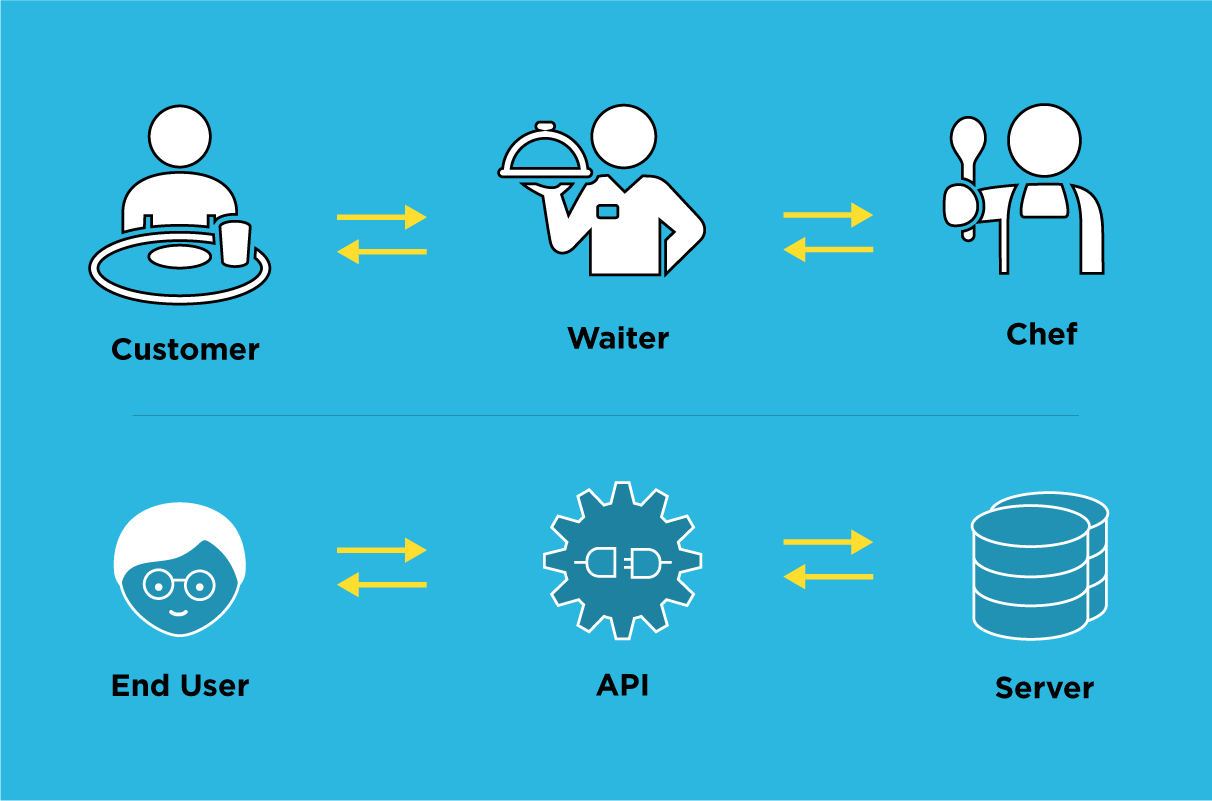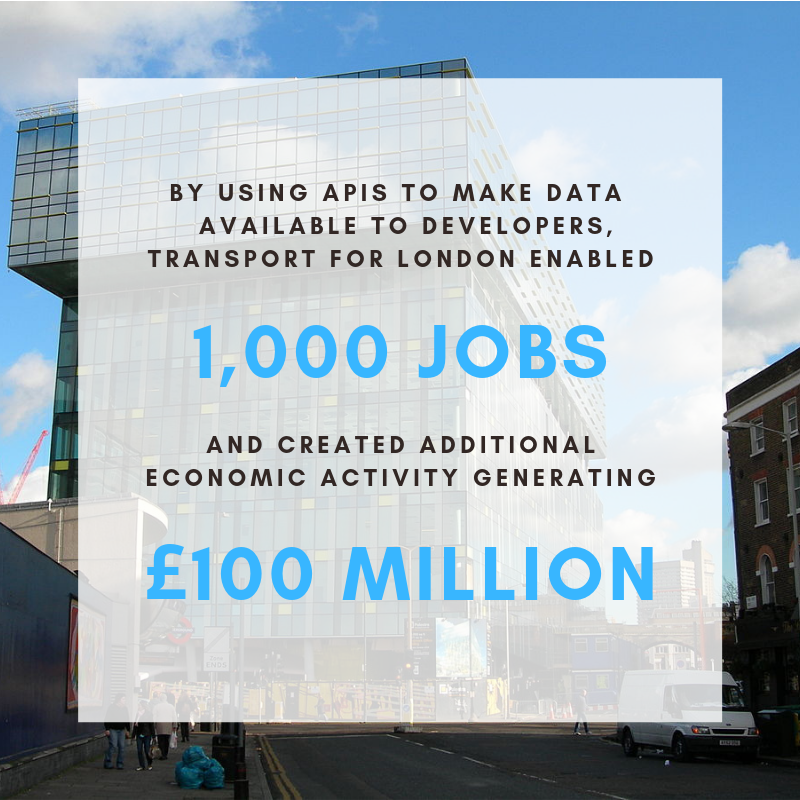
APIs in Government
Improving Government Service Delivery, With Less RiskCover Photo: An API is like a waiter. The waiter (API) retrieves the requested item from the kitchen (database) and delivers it to the customer (software application).
There’s one technology that could dramatically improve the way we interact with our governments and use government data. In the process, this one technology could protect government from the risks associated with digital projects – and even create entire new markets within the economy.
The Application Programming Interface, or API, has been the driver of major market disruptions. Netflix made Blockbuster obsolete, Spotify grew to be the world’s largest on-demand music service and Amazon became the most valuable public company in the world all with the help of APIs.
APIs have become a foundational technological component of modern digital architectures, impacting every sector of the global economy. Now considered an essential element of modern digital service delivery, APIs are “a kind of an infrastructure” and are “the key to unlocking the digital economy.” APIs have the potential to accelerate and improve government digital service delivery, enhance interoperability between government bodies, facilitate open-data initiatives and allow for the co-creation of digital services between the public and private sectors.
While you may not have heard of APIs, you have almost definitely used them. APIs are behind so much modern functionality, from the buttons that let you share articles on social media to the directions you get from your favourite navigation or mapping app.

Governments are using APIs more and more. In fact, one of the earliest uses by the Government of Canada, the Canada Revenue Agency’s NETFILE program, has been called “the most significant example of success” of e-government services.
The Public Policy Forum’s new report, “APIs in Government” explores two uses of APIs within the Government of Canada, one being the NETFILE program, to help the public and public servants understand what works and what doesn’t.
We came up with four key takeaways:
1. Know your users, focus on their needs and build trust.
Fully understand who your user(s) are and their needs to ensure that the API(s) being developed can be of use to them.
Talking to users and identifying their needs is crucial for the successful design and deployment of APIs. Two-way interactions with third-party software developers who are API users are essential for information and feedback. When developing an API, CDS recommends co-locating with users to better understand and meet their needs.
By providing information about project goals, legal and technical limitations, and other details, relationships of trust can be established with developers while also empowering them to provide feedback that is as useful as possible.
2. Enable hybrid co-creation models alongside API deployment.
Create an environment for software companies to develop a range of alternative service-delivery models.
Traditionally, government digital services have been developed either in-house or through a procurement process. But initiatives like CRA’s NETFILE demonstrate that APIs can avoid the pitfalls of the traditional options by sharing data and empowering developers to collaborate with government in new ways that do not require the government or a private company to define a single response to a digital service-delivery opportunity. Nobody needs to define, in advance, the “right” or “best” solution.
3. Use APIs to overcome legacy system limitations.
APIs can be used to create bridges between legacy and modern systems, overcoming the limits of legacy systems and helping to speed up their eventual retirement.
The enterprise architecture within many large organizations can resemble a technological “Frankenstein”—a range of legacy technologies cobbled together to work with modern systems. Rather than replace legacy systems or create custom code allowing legacy systems to interact with each new system introduced (known as point-to-point integration), organizations can create APIs that will bridge to the data in a legacy system.
When APIs are managed responsibly, they protect the integrity of other systems, enable secure and governed access, deliver insight into how data is used and accelerate developer productivity. By allowing new systems easy access to the data in a legacy system, it becomes much easier to modernize the entire system and overcome the limitations imposed by legacy infrastructure.
4. Use APIs to make government data more accessible.
The use of APIs can be a more effective means of opening up structured data inside and outside of government.
Public APIs can play an important role in realizing the goals of open government by making data publicly accessible in modern, structured, more readily usable ways.
Sharing discoverable and reusable data allows anyone to identify new use cases and adapt to changing needs. Ensuring that APIs are interoperable can also increase organizational efficiency when they are shared internally. In fact, TBS has updated its Directive on the Management of Information Technology to require open standards and solutions by default as well as certain measures to enable interoperability.
By using APIs to share data, governments can stimulate the economy, improve their service delivery, update their IT, improve their understanding of how citizens use their services, reduce the risks associated with digital project development and make themselves more open and transparent.
If you are a public servant looking to make these things happen, read our report and feel free to reach out to us or to the Canadian Digital Service to learn more.
Contact: Zac Delong, Policy Lead








